-
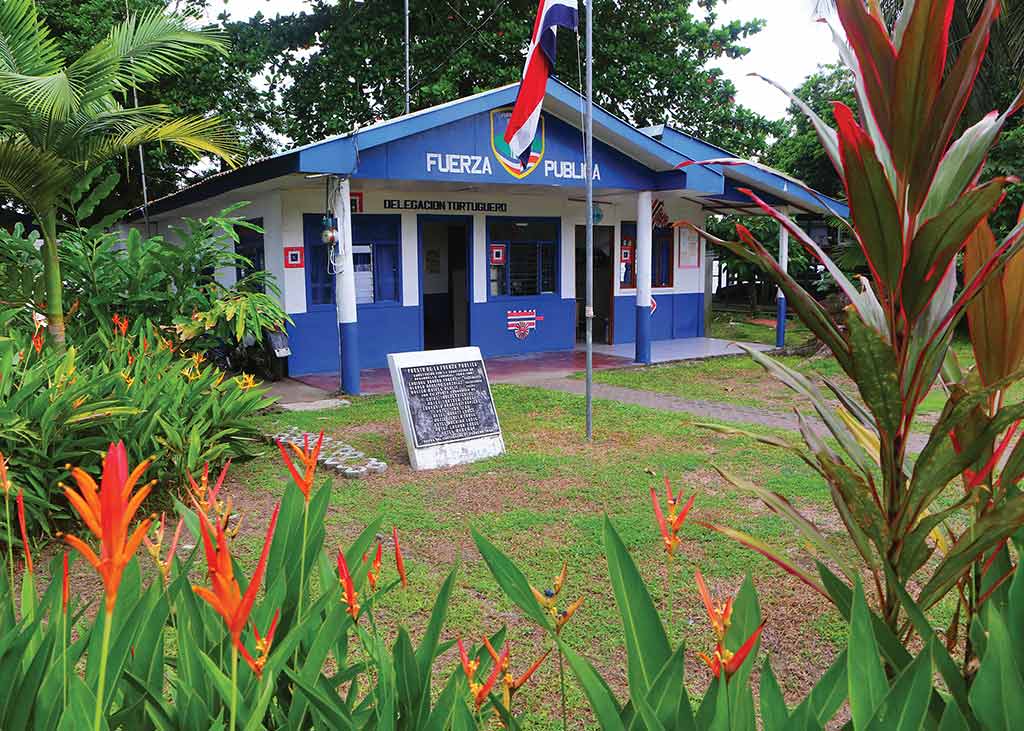 Staying Safe in Costa Rica
Staying safe while traveling in Costa Rica is one part preparation and two parts common sense. You’ll find most of these tips apply to travel almost anywhere, but there are a handful of specific precautions you can take to ensure both you and your possessions are safe in Costa Rica. The Inst
Staying Safe in Costa Rica
Staying safe while traveling in Costa Rica is one part preparation and two parts common sense. You’ll find most of these tips apply to travel almost anywhere, but there are a handful of specific precautions you can take to ensure both you and your possessions are safe in Costa Rica. The Inst
-
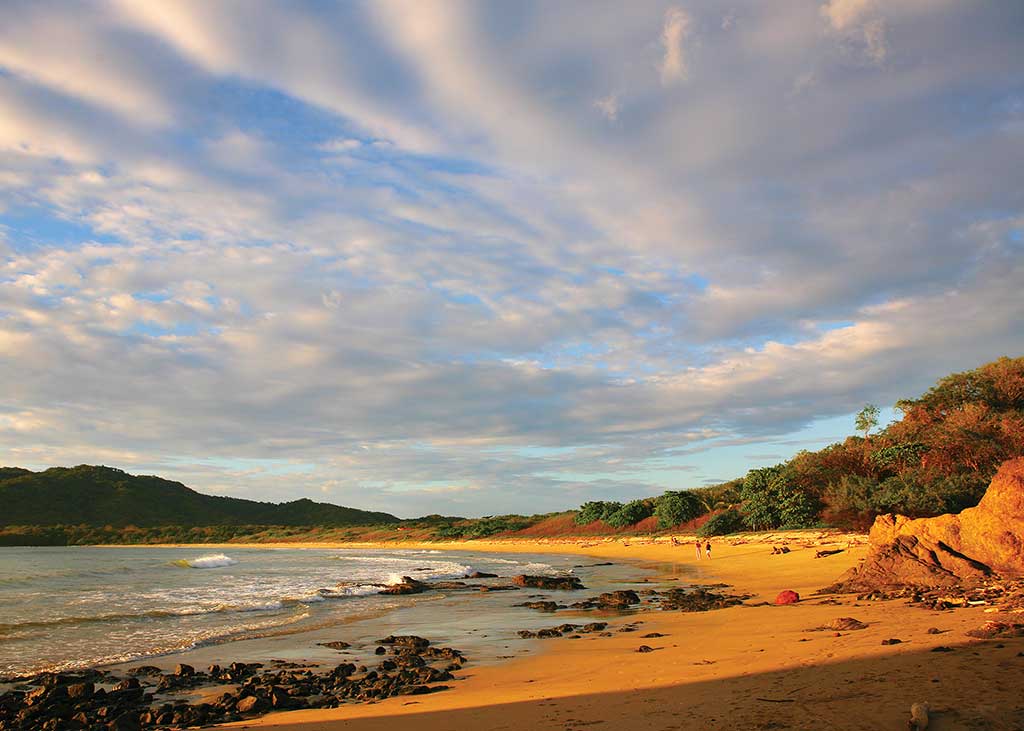 Costa Rica's Best Beaches
Costa Rica boasts glorious beaches, virtually all backed by rainforest. Here are the best divided by region, including the best activities for each. Swim with caution; many beaches are known for riptides.
The Caribbean
Tortuguero: This silvery beach backed by lush rainforest is the most important
Costa Rica's Best Beaches
Costa Rica boasts glorious beaches, virtually all backed by rainforest. Here are the best divided by region, including the best activities for each. Swim with caution; many beaches are known for riptides.
The Caribbean
Tortuguero: This silvery beach backed by lush rainforest is the most important
-
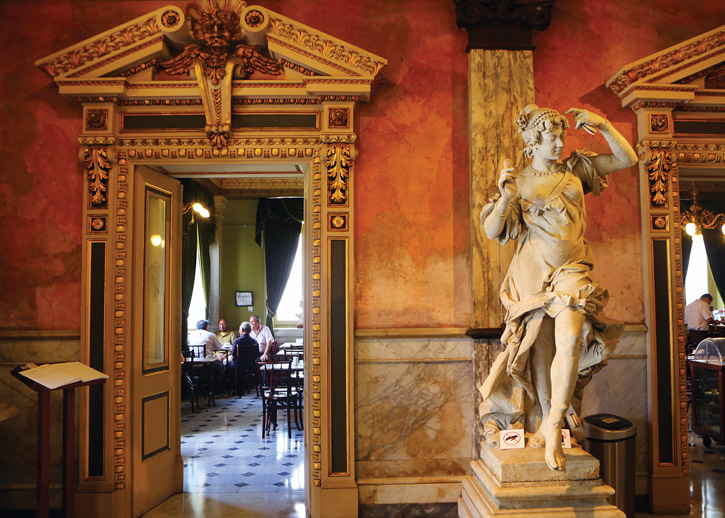 Sights in San José's Plaza de la Cultura
San José’s unofficial focal point is the Plaza de la Cultura, bordered by Calles 3 and 5 and Avenidas Central and 2. Musicians, jugglers, and marimba bands entertain the crowds. Travelers gather on the southwest corner to absorb the colorful atmosphere while enjoying a beer and food on the open-ai
Sights in San José's Plaza de la Cultura
San José’s unofficial focal point is the Plaza de la Cultura, bordered by Calles 3 and 5 and Avenidas Central and 2. Musicians, jugglers, and marimba bands entertain the crowds. Travelers gather on the southwest corner to absorb the colorful atmosphere while enjoying a beer and food on the open-ai
-
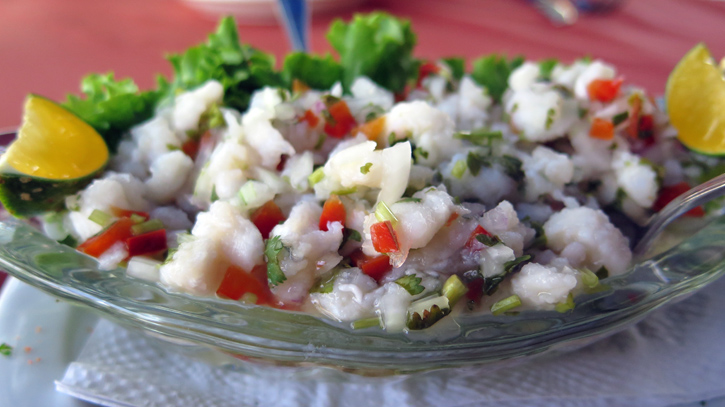 Traditional Food in Costa Rica
Costa Rican cuisine is simple, and spices are shunned. Comida típica, or native cuisine, relies heavily on rice and beans, and “home style” cooking predominates. Gallo pinto, the national dish of fried rice and black beans, is ubiquitous, including as a breakfast (desayuno) staple. Many meals are
Traditional Food in Costa Rica
Costa Rican cuisine is simple, and spices are shunned. Comida típica, or native cuisine, relies heavily on rice and beans, and “home style” cooking predominates. Gallo pinto, the national dish of fried rice and black beans, is ubiquitous, including as a breakfast (desayuno) staple. Many meals are
-
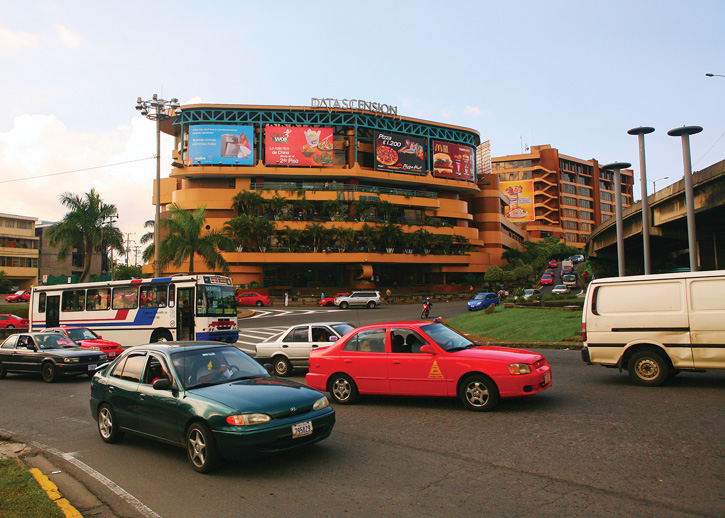 Getting Around San José, Costa Rica
Getting around San José is very easy if you’re in the know and extremely frustrating if you aren’t. Most places are quickly and easily reached by taxi, by bus, or on foot. Here’s what you need to know before renting a car, the ins and outs of public transportation in Costa Rica,
Getting Around San José, Costa Rica
Getting around San José is very easy if you’re in the know and extremely frustrating if you aren’t. Most places are quickly and easily reached by taxi, by bus, or on foot. Here’s what you need to know before renting a car, the ins and outs of public transportation in Costa Rica,
-
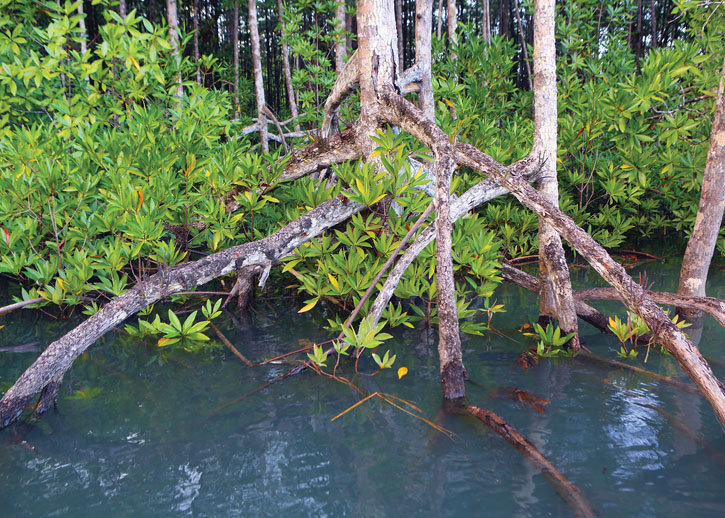 Costa Rica's Mangrove Estuaries
Costa Rica’s shorelines are home to five species of mangroves. These pioneer land builders thrive at the interface of land and sea, forming a stabilizing tangle that fights tidal erosion and reclaims land from the water.
Mangroves build up the soil until they strand themselves high and dry. In the
Costa Rica's Mangrove Estuaries
Costa Rica’s shorelines are home to five species of mangroves. These pioneer land builders thrive at the interface of land and sea, forming a stabilizing tangle that fights tidal erosion and reclaims land from the water.
Mangroves build up the soil until they strand themselves high and dry. In the
-
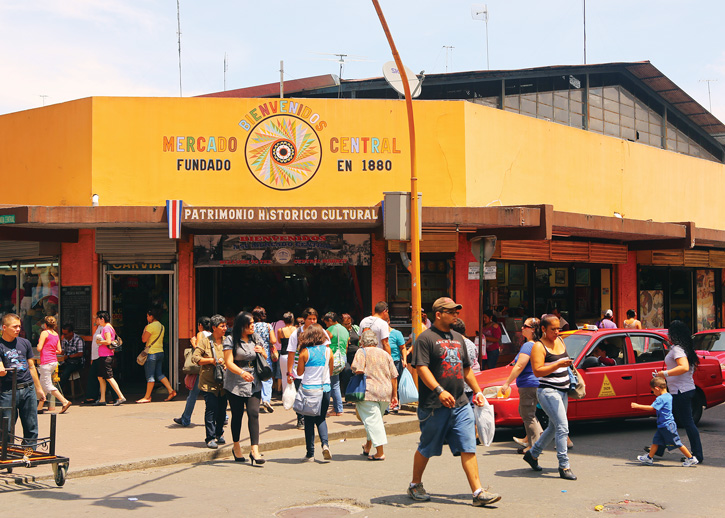 Sights in West-Central San José, Costa Rica
Sights in west-central San José are big on culture. Fans of architecture and history buffs won’t want to miss spending an afternoon here, and those looking for true cultural immersion should definitely hit up the market scene.
Mercado Central
The warren-like Mercado Central (Central Market,
Sights in West-Central San José, Costa Rica
Sights in west-central San José are big on culture. Fans of architecture and history buffs won’t want to miss spending an afternoon here, and those looking for true cultural immersion should definitely hit up the market scene.
Mercado Central
The warren-like Mercado Central (Central Market,
-
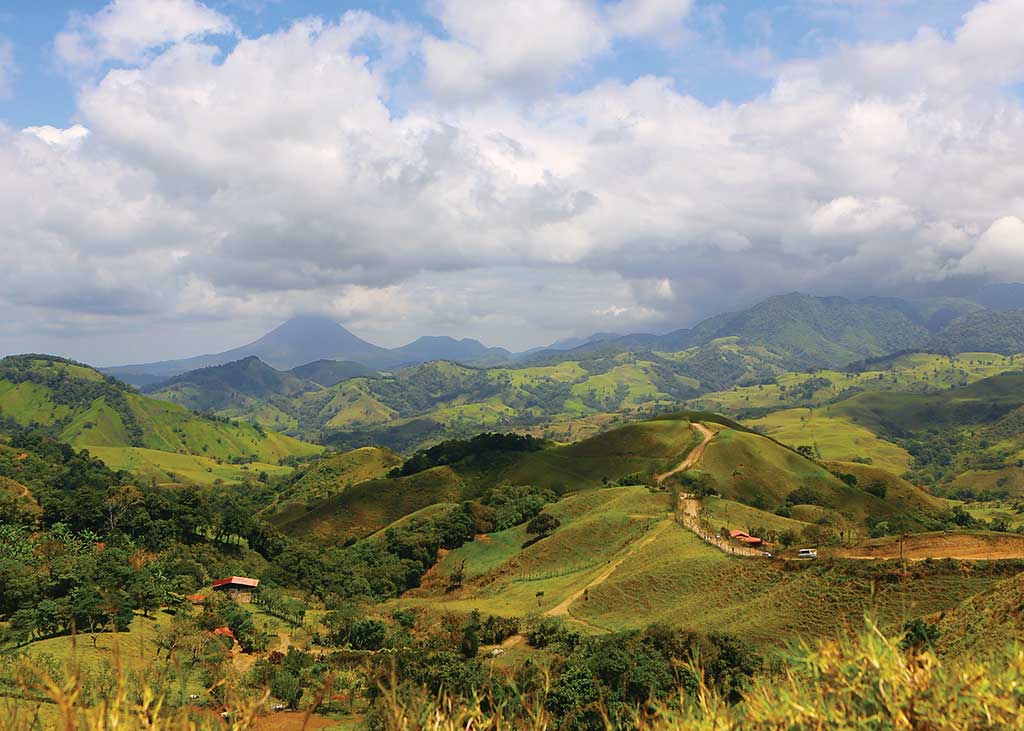 Costa Rica's Central Highlands
The beauty of the Central Highlands owes much to the juxtaposition of valley and mountain. The large, fertile central valley—sometimes called the Meseta Central (Central Plateau)—is a tectonic depression about 20 kilometers (12 miles) wide and 70 kilometers (43 miles) long. The basin is held in th
Costa Rica's Central Highlands
The beauty of the Central Highlands owes much to the juxtaposition of valley and mountain. The large, fertile central valley—sometimes called the Meseta Central (Central Plateau)—is a tectonic depression about 20 kilometers (12 miles) wide and 70 kilometers (43 miles) long. The basin is held in th
-
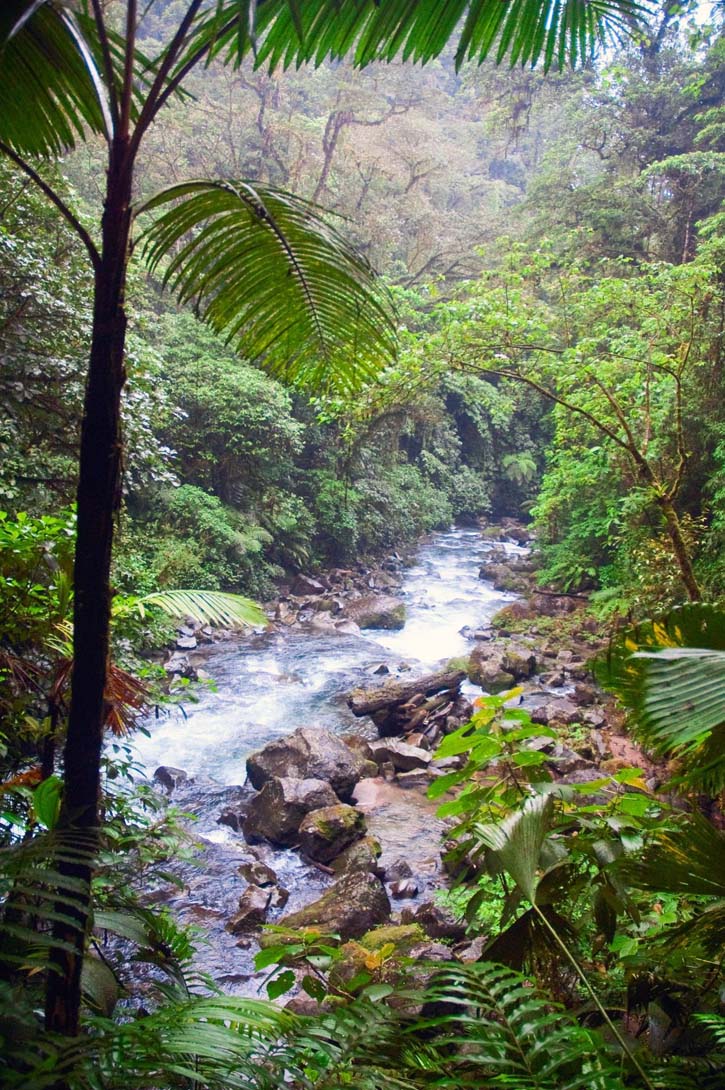 Costa Rica's Incredibly Diverse Plant Life
In 1947 biologist L. H. Holdridge introduced a system of classifying vegetation types or “zones” according to a matrix based on combinations of temperature, rainfall, and seasonality. Each zone has a distinct natural vegetation and ecosystem. Costa Rica has 12 such zones, ranging from tidal mangro
Costa Rica's Incredibly Diverse Plant Life
In 1947 biologist L. H. Holdridge introduced a system of classifying vegetation types or “zones” according to a matrix based on combinations of temperature, rainfall, and seasonality. Each zone has a distinct natural vegetation and ecosystem. Costa Rica has 12 such zones, ranging from tidal mangro
-
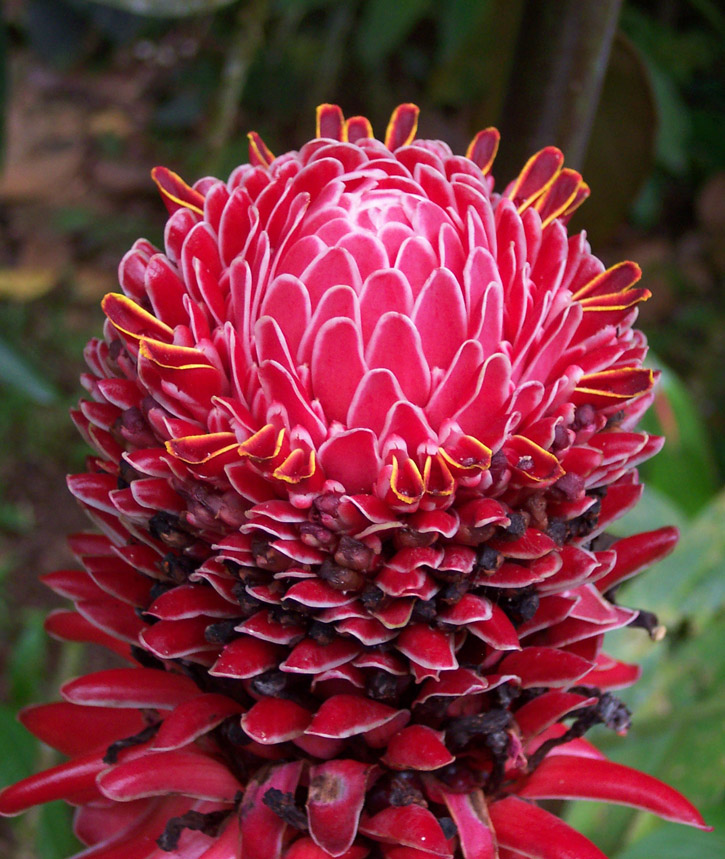 All About Piedras Blancas National Park
Centered on the village of La Gamba, this rainforest zone was split from Parque Nacional Corcovado in 1999 and named a national park in its own right. Land within the bounds of Parque Nacional Piedras Blancas is still privately owned, and logging permits issued before 1991 apparently remain valid.
All About Piedras Blancas National Park
Centered on the village of La Gamba, this rainforest zone was split from Parque Nacional Corcovado in 1999 and named a national park in its own right. Land within the bounds of Parque Nacional Piedras Blancas is still privately owned, and logging permits issued before 1991 apparently remain valid.
-
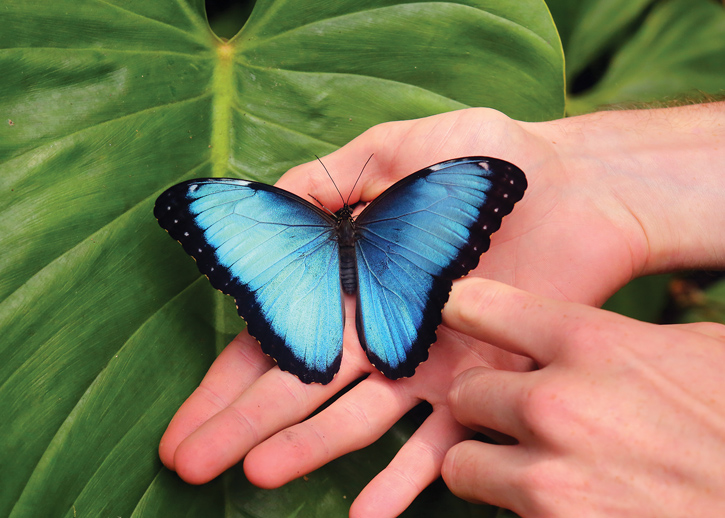 Spotting Butterflies in Costa Rica
With nearly 1,000 identified species (approximately 10 percent of the world total), Costa Rica is a lepidopterist’s paradise. You can barely stand still for one minute without checking off a dozen dazzling species: metallic gold Riodinidae; delicate black-winged Heliconius splashed with bright red
Spotting Butterflies in Costa Rica
With nearly 1,000 identified species (approximately 10 percent of the world total), Costa Rica is a lepidopterist’s paradise. You can barely stand still for one minute without checking off a dozen dazzling species: metallic gold Riodinidae; delicate black-winged Heliconius splashed with bright red
-
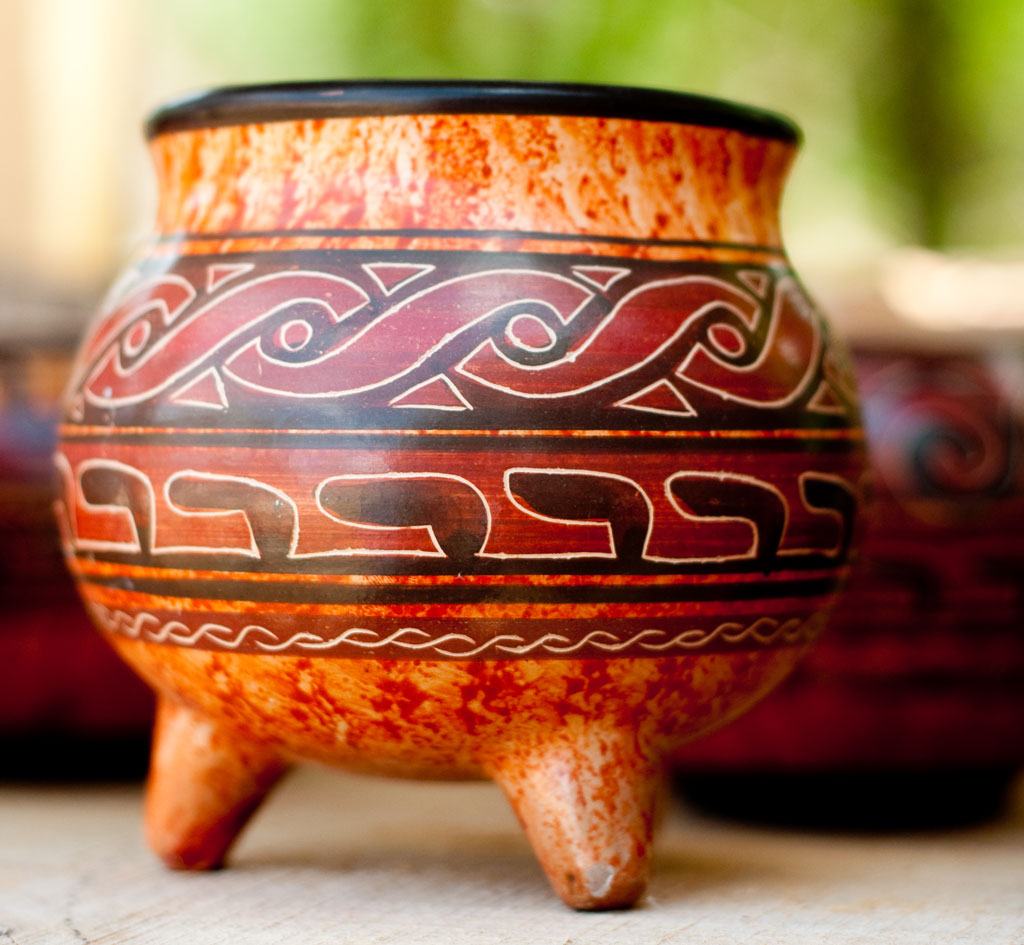 Indigenous Arts and Crafts in Costa Rica
Historically, Costa Rica has been relatively impoverished in the area of indigenous arts and crafts. The country, with its relatively small and heterogeneous pre-Columbian population, had no unique cultural legacy that could spark a creative synthesis where the modern and the traditional might mer
Indigenous Arts and Crafts in Costa Rica
Historically, Costa Rica has been relatively impoverished in the area of indigenous arts and crafts. The country, with its relatively small and heterogeneous pre-Columbian population, had no unique cultural legacy that could spark a creative synthesis where the modern and the traditional might mer
-
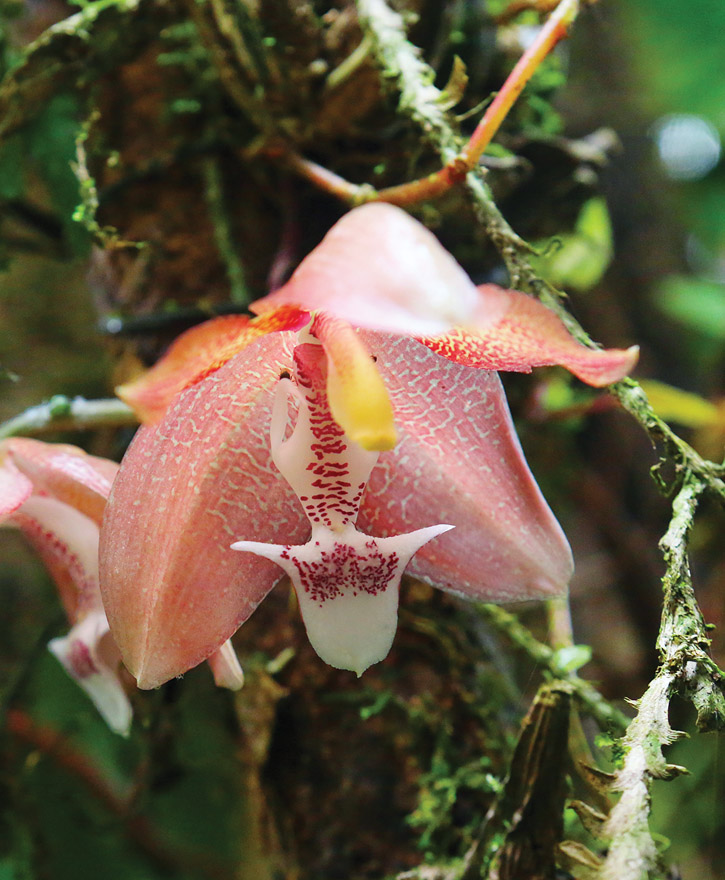 Costa Rica's Ingenious Orchids
It’s appropriate that the orchid is the national flower of Costa Rica: The country has more than 1,400 identified species. Countless others await discovery. At any time of year you’re sure to find dozens of species in bloom, from sea level to the highest subfreezing reaches of Chirripó. There is n
Costa Rica's Ingenious Orchids
It’s appropriate that the orchid is the national flower of Costa Rica: The country has more than 1,400 identified species. Countless others await discovery. At any time of year you’re sure to find dozens of species in bloom, from sea level to the highest subfreezing reaches of Chirripó. There is n
-
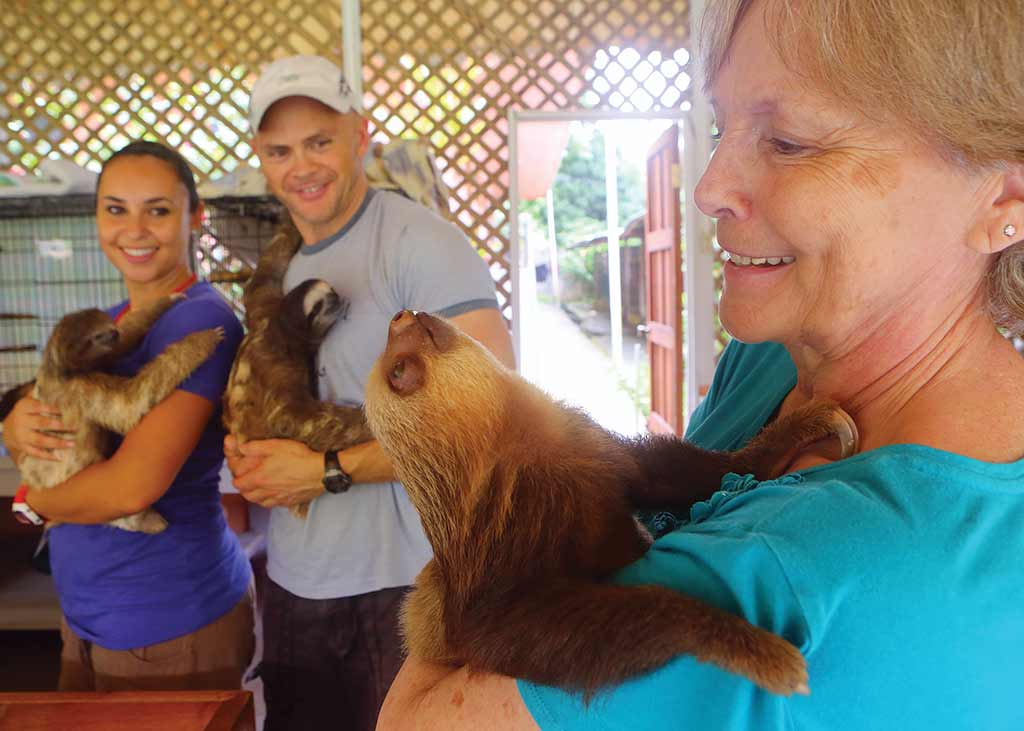 Costa Rica Nature Reserves: Puerto Limón to Cahuita
South of Puerto Limón, the shore is lined by brown-sand beaches fringed by palms. About 30 kilometers (19 miles) south of Limón, the road crosses the Río Estrella a few kilometers north of the village of Penshurst, where a branch road leads into the Valle del Río Estrella. The valley is blanketed
Costa Rica Nature Reserves: Puerto Limón to Cahuita
South of Puerto Limón, the shore is lined by brown-sand beaches fringed by palms. About 30 kilometers (19 miles) south of Limón, the road crosses the Río Estrella a few kilometers north of the village of Penshurst, where a branch road leads into the Valle del Río Estrella. The valley is blanketed
-
 Costa Rica's Most Active Volcanoes
Costa Rica lies at the heart of one of the most active volcanic regions on earth and is home to 7 of the isthmus’s 42 active volcanoes, plus 60 dormant or extinct ones. Some have the look classically associated with volcanoes—a graceful symmetrical cone rising to a single crater. Others are sprawl
Costa Rica's Most Active Volcanoes
Costa Rica lies at the heart of one of the most active volcanic regions on earth and is home to 7 of the isthmus’s 42 active volcanoes, plus 60 dormant or extinct ones. Some have the look classically associated with volcanoes—a graceful symmetrical cone rising to a single crater. Others are sprawl
-
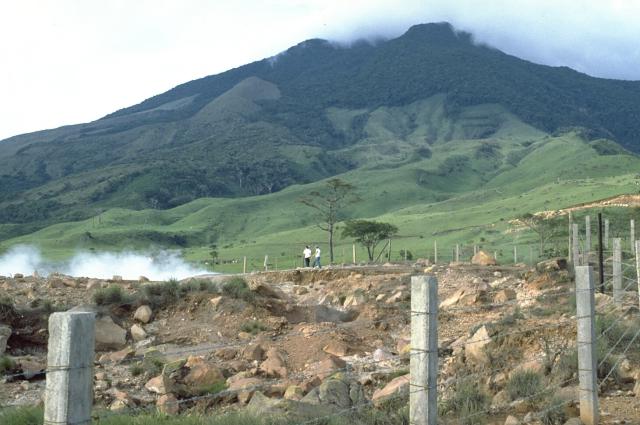 Exploring Miravalles Volcano
The small, nondescript town of Bagaces is on Highway 1, about 22 kilometers (14 miles) north of Cañas. Bagaces is the gateway to Parque Nacional Palo Verde (west) and Volcán Miravalles (east).
Boardwalks lead through the crater itself, with mud pools and fumaroles hissing and bubbling all around.H
Exploring Miravalles Volcano
The small, nondescript town of Bagaces is on Highway 1, about 22 kilometers (14 miles) north of Cañas. Bagaces is the gateway to Parque Nacional Palo Verde (west) and Volcán Miravalles (east).
Boardwalks lead through the crater itself, with mud pools and fumaroles hissing and bubbling all around.H
-
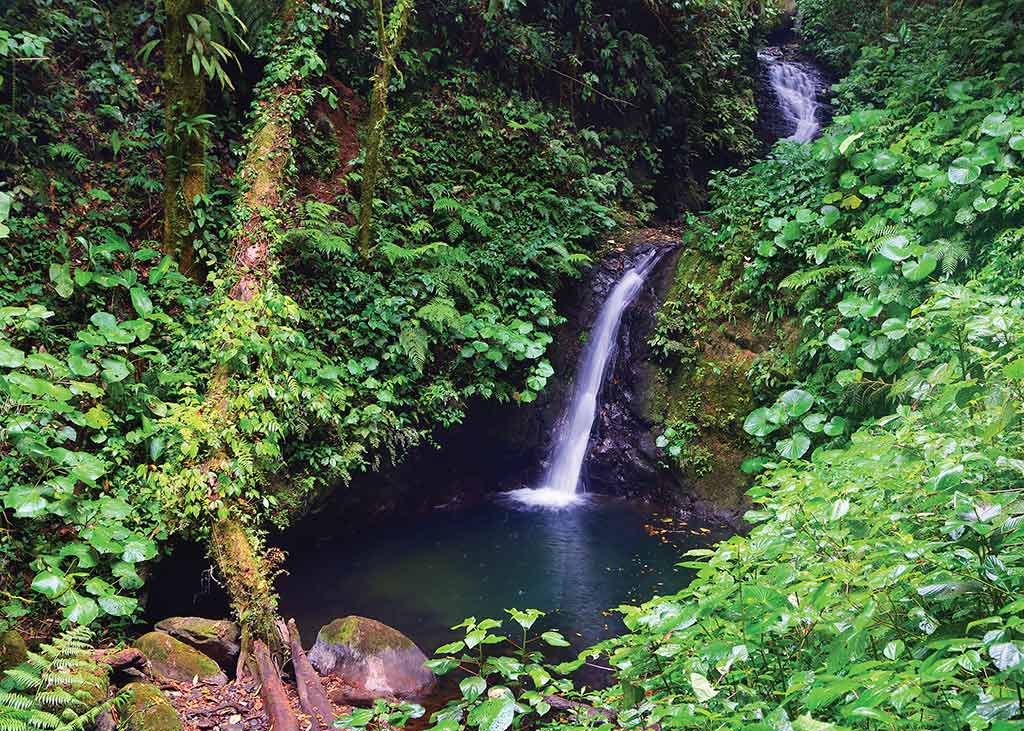 Exploring Monteverde's Cloud Forest
Monteverde, 35 kilometers (22 miles) north from the Pan-American Highway, means “Green Mountain,” an appropriate name for one of the most idyllic pastoral settings in Costa Rica. Cows munch contentedly, and horse-drawn wagons loaded with milk cans still make the rounds in this world-famous communi
Exploring Monteverde's Cloud Forest
Monteverde, 35 kilometers (22 miles) north from the Pan-American Highway, means “Green Mountain,” an appropriate name for one of the most idyllic pastoral settings in Costa Rica. Cows munch contentedly, and horse-drawn wagons loaded with milk cans still make the rounds in this world-famous communi
-
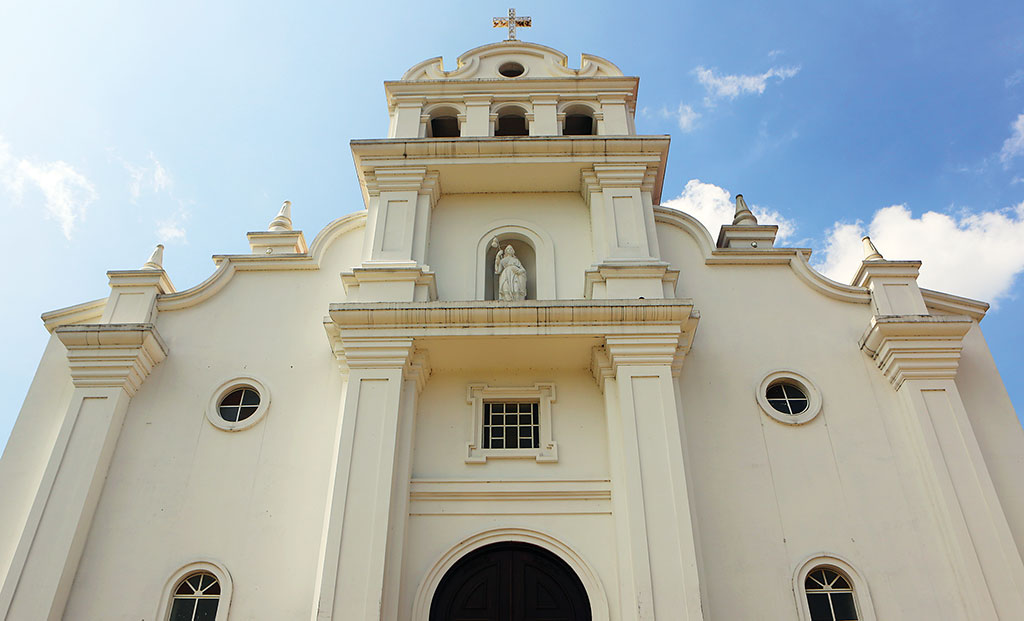 Spending Time in Escazú, Costa Rica
Beginning only four kilometers (2.5 miles) west of San José’s Parque Sabana, Escazú is officially part of metropolitan San José. However, it is divided from the capital by a hill range and river canyon and is so individualistic that it functions virtually as a sister city. The town is accessed by
Spending Time in Escazú, Costa Rica
Beginning only four kilometers (2.5 miles) west of San José’s Parque Sabana, Escazú is officially part of metropolitan San José. However, it is divided from the capital by a hill range and river canyon and is so individualistic that it functions virtually as a sister city. The town is accessed by
-
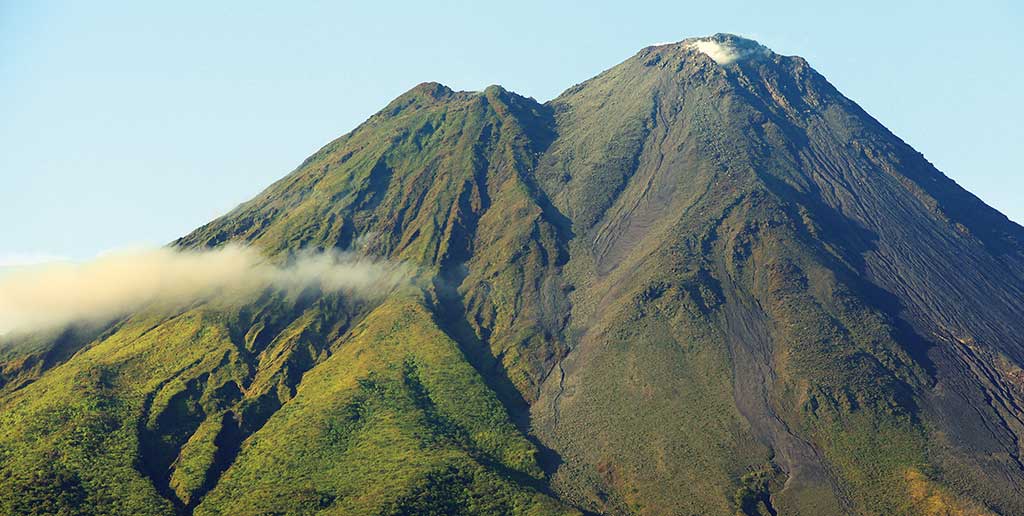 Planning Your Time in Costa Rica's Northern Lowlands
Costa Rica’s northern lowlands constitute a 40,000-square-kilometer (15,400-square-mile) watershed drained by the Ríos Frío, San Carlos, and Sarapiquí and their tributaries, which flow north to the Río San Juan, forming the border with Nicaragua. The rivers meander like restless snakes and f
Planning Your Time in Costa Rica's Northern Lowlands
Costa Rica’s northern lowlands constitute a 40,000-square-kilometer (15,400-square-mile) watershed drained by the Ríos Frío, San Carlos, and Sarapiquí and their tributaries, which flow north to the Río San Juan, forming the border with Nicaragua. The rivers meander like restless snakes and f
-
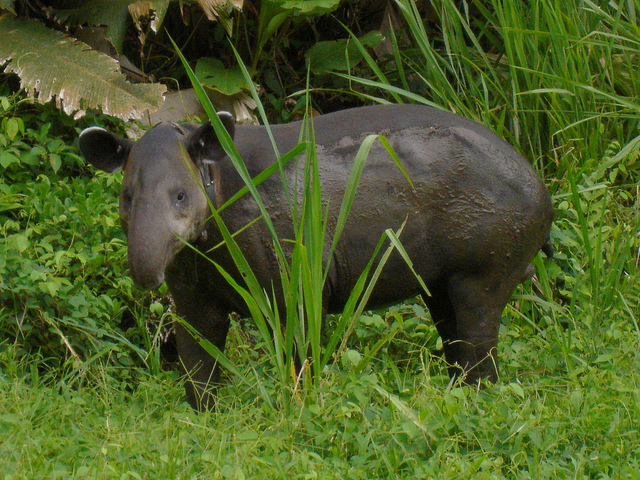 Animals Found in Costa Rica
Anyone who has traveled in the tropics in search of wildlife can tell you that disappointment comes easy. But Costa Rica is one place that lives up to its reputation. Costa Rica is nature’s live theater—and the actors aren’t shy. The scarlet macaws are like rainbows, the toucans and hummingbirds l
Animals Found in Costa Rica
Anyone who has traveled in the tropics in search of wildlife can tell you that disappointment comes easy. But Costa Rica is one place that lives up to its reputation. Costa Rica is nature’s live theater—and the actors aren’t shy. The scarlet macaws are like rainbows, the toucans and hummingbirds l
Total
334 -travel
FirstPage PreviousPage NextPage LastPage CurrentPage:
16/17 20-travel/Page Goto:
 Staying Safe in Costa Rica
Staying safe while traveling in Costa Rica is one part preparation and two parts common sense. You’ll find most of these tips apply to travel almost anywhere, but there are a handful of specific precautions you can take to ensure both you and your possessions are safe in Costa Rica. The Inst
Staying Safe in Costa Rica
Staying safe while traveling in Costa Rica is one part preparation and two parts common sense. You’ll find most of these tips apply to travel almost anywhere, but there are a handful of specific precautions you can take to ensure both you and your possessions are safe in Costa Rica. The Inst
 Costa Rica's Best Beaches
Costa Rica boasts glorious beaches, virtually all backed by rainforest. Here are the best divided by region, including the best activities for each. Swim with caution; many beaches are known for riptides.
The Caribbean
Tortuguero: This silvery beach backed by lush rainforest is the most important
Costa Rica's Best Beaches
Costa Rica boasts glorious beaches, virtually all backed by rainforest. Here are the best divided by region, including the best activities for each. Swim with caution; many beaches are known for riptides.
The Caribbean
Tortuguero: This silvery beach backed by lush rainforest is the most important
 Sights in San José's Plaza de la Cultura
San José’s unofficial focal point is the Plaza de la Cultura, bordered by Calles 3 and 5 and Avenidas Central and 2. Musicians, jugglers, and marimba bands entertain the crowds. Travelers gather on the southwest corner to absorb the colorful atmosphere while enjoying a beer and food on the open-ai
Sights in San José's Plaza de la Cultura
San José’s unofficial focal point is the Plaza de la Cultura, bordered by Calles 3 and 5 and Avenidas Central and 2. Musicians, jugglers, and marimba bands entertain the crowds. Travelers gather on the southwest corner to absorb the colorful atmosphere while enjoying a beer and food on the open-ai
 Traditional Food in Costa Rica
Costa Rican cuisine is simple, and spices are shunned. Comida típica, or native cuisine, relies heavily on rice and beans, and “home style” cooking predominates. Gallo pinto, the national dish of fried rice and black beans, is ubiquitous, including as a breakfast (desayuno) staple. Many meals are
Traditional Food in Costa Rica
Costa Rican cuisine is simple, and spices are shunned. Comida típica, or native cuisine, relies heavily on rice and beans, and “home style” cooking predominates. Gallo pinto, the national dish of fried rice and black beans, is ubiquitous, including as a breakfast (desayuno) staple. Many meals are
 Getting Around San José, Costa Rica
Getting around San José is very easy if you’re in the know and extremely frustrating if you aren’t. Most places are quickly and easily reached by taxi, by bus, or on foot. Here’s what you need to know before renting a car, the ins and outs of public transportation in Costa Rica,
Getting Around San José, Costa Rica
Getting around San José is very easy if you’re in the know and extremely frustrating if you aren’t. Most places are quickly and easily reached by taxi, by bus, or on foot. Here’s what you need to know before renting a car, the ins and outs of public transportation in Costa Rica,
 Costa Rica's Mangrove Estuaries
Costa Rica’s shorelines are home to five species of mangroves. These pioneer land builders thrive at the interface of land and sea, forming a stabilizing tangle that fights tidal erosion and reclaims land from the water.
Mangroves build up the soil until they strand themselves high and dry. In the
Costa Rica's Mangrove Estuaries
Costa Rica’s shorelines are home to five species of mangroves. These pioneer land builders thrive at the interface of land and sea, forming a stabilizing tangle that fights tidal erosion and reclaims land from the water.
Mangroves build up the soil until they strand themselves high and dry. In the
 Sights in West-Central San José, Costa Rica
Sights in west-central San José are big on culture. Fans of architecture and history buffs won’t want to miss spending an afternoon here, and those looking for true cultural immersion should definitely hit up the market scene.
Mercado Central
The warren-like Mercado Central (Central Market,
Sights in West-Central San José, Costa Rica
Sights in west-central San José are big on culture. Fans of architecture and history buffs won’t want to miss spending an afternoon here, and those looking for true cultural immersion should definitely hit up the market scene.
Mercado Central
The warren-like Mercado Central (Central Market,
 Costa Rica's Central Highlands
The beauty of the Central Highlands owes much to the juxtaposition of valley and mountain. The large, fertile central valley—sometimes called the Meseta Central (Central Plateau)—is a tectonic depression about 20 kilometers (12 miles) wide and 70 kilometers (43 miles) long. The basin is held in th
Costa Rica's Central Highlands
The beauty of the Central Highlands owes much to the juxtaposition of valley and mountain. The large, fertile central valley—sometimes called the Meseta Central (Central Plateau)—is a tectonic depression about 20 kilometers (12 miles) wide and 70 kilometers (43 miles) long. The basin is held in th
 Costa Rica's Incredibly Diverse Plant Life
In 1947 biologist L. H. Holdridge introduced a system of classifying vegetation types or “zones” according to a matrix based on combinations of temperature, rainfall, and seasonality. Each zone has a distinct natural vegetation and ecosystem. Costa Rica has 12 such zones, ranging from tidal mangro
Costa Rica's Incredibly Diverse Plant Life
In 1947 biologist L. H. Holdridge introduced a system of classifying vegetation types or “zones” according to a matrix based on combinations of temperature, rainfall, and seasonality. Each zone has a distinct natural vegetation and ecosystem. Costa Rica has 12 such zones, ranging from tidal mangro
 All About Piedras Blancas National Park
Centered on the village of La Gamba, this rainforest zone was split from Parque Nacional Corcovado in 1999 and named a national park in its own right. Land within the bounds of Parque Nacional Piedras Blancas is still privately owned, and logging permits issued before 1991 apparently remain valid.
All About Piedras Blancas National Park
Centered on the village of La Gamba, this rainforest zone was split from Parque Nacional Corcovado in 1999 and named a national park in its own right. Land within the bounds of Parque Nacional Piedras Blancas is still privately owned, and logging permits issued before 1991 apparently remain valid.
 Spotting Butterflies in Costa Rica
With nearly 1,000 identified species (approximately 10 percent of the world total), Costa Rica is a lepidopterist’s paradise. You can barely stand still for one minute without checking off a dozen dazzling species: metallic gold Riodinidae; delicate black-winged Heliconius splashed with bright red
Spotting Butterflies in Costa Rica
With nearly 1,000 identified species (approximately 10 percent of the world total), Costa Rica is a lepidopterist’s paradise. You can barely stand still for one minute without checking off a dozen dazzling species: metallic gold Riodinidae; delicate black-winged Heliconius splashed with bright red
 Indigenous Arts and Crafts in Costa Rica
Historically, Costa Rica has been relatively impoverished in the area of indigenous arts and crafts. The country, with its relatively small and heterogeneous pre-Columbian population, had no unique cultural legacy that could spark a creative synthesis where the modern and the traditional might mer
Indigenous Arts and Crafts in Costa Rica
Historically, Costa Rica has been relatively impoverished in the area of indigenous arts and crafts. The country, with its relatively small and heterogeneous pre-Columbian population, had no unique cultural legacy that could spark a creative synthesis where the modern and the traditional might mer
 Costa Rica's Ingenious Orchids
It’s appropriate that the orchid is the national flower of Costa Rica: The country has more than 1,400 identified species. Countless others await discovery. At any time of year you’re sure to find dozens of species in bloom, from sea level to the highest subfreezing reaches of Chirripó. There is n
Costa Rica's Ingenious Orchids
It’s appropriate that the orchid is the national flower of Costa Rica: The country has more than 1,400 identified species. Countless others await discovery. At any time of year you’re sure to find dozens of species in bloom, from sea level to the highest subfreezing reaches of Chirripó. There is n
 Costa Rica Nature Reserves: Puerto Limón to Cahuita
South of Puerto Limón, the shore is lined by brown-sand beaches fringed by palms. About 30 kilometers (19 miles) south of Limón, the road crosses the Río Estrella a few kilometers north of the village of Penshurst, where a branch road leads into the Valle del Río Estrella. The valley is blanketed
Costa Rica Nature Reserves: Puerto Limón to Cahuita
South of Puerto Limón, the shore is lined by brown-sand beaches fringed by palms. About 30 kilometers (19 miles) south of Limón, the road crosses the Río Estrella a few kilometers north of the village of Penshurst, where a branch road leads into the Valle del Río Estrella. The valley is blanketed
 Costa Rica's Most Active Volcanoes
Costa Rica lies at the heart of one of the most active volcanic regions on earth and is home to 7 of the isthmus’s 42 active volcanoes, plus 60 dormant or extinct ones. Some have the look classically associated with volcanoes—a graceful symmetrical cone rising to a single crater. Others are sprawl
Costa Rica's Most Active Volcanoes
Costa Rica lies at the heart of one of the most active volcanic regions on earth and is home to 7 of the isthmus’s 42 active volcanoes, plus 60 dormant or extinct ones. Some have the look classically associated with volcanoes—a graceful symmetrical cone rising to a single crater. Others are sprawl
 Exploring Miravalles Volcano
The small, nondescript town of Bagaces is on Highway 1, about 22 kilometers (14 miles) north of Cañas. Bagaces is the gateway to Parque Nacional Palo Verde (west) and Volcán Miravalles (east).
Boardwalks lead through the crater itself, with mud pools and fumaroles hissing and bubbling all around.H
Exploring Miravalles Volcano
The small, nondescript town of Bagaces is on Highway 1, about 22 kilometers (14 miles) north of Cañas. Bagaces is the gateway to Parque Nacional Palo Verde (west) and Volcán Miravalles (east).
Boardwalks lead through the crater itself, with mud pools and fumaroles hissing and bubbling all around.H
 Exploring Monteverde's Cloud Forest
Monteverde, 35 kilometers (22 miles) north from the Pan-American Highway, means “Green Mountain,” an appropriate name for one of the most idyllic pastoral settings in Costa Rica. Cows munch contentedly, and horse-drawn wagons loaded with milk cans still make the rounds in this world-famous communi
Exploring Monteverde's Cloud Forest
Monteverde, 35 kilometers (22 miles) north from the Pan-American Highway, means “Green Mountain,” an appropriate name for one of the most idyllic pastoral settings in Costa Rica. Cows munch contentedly, and horse-drawn wagons loaded with milk cans still make the rounds in this world-famous communi
 Spending Time in Escazú, Costa Rica
Beginning only four kilometers (2.5 miles) west of San José’s Parque Sabana, Escazú is officially part of metropolitan San José. However, it is divided from the capital by a hill range and river canyon and is so individualistic that it functions virtually as a sister city. The town is accessed by
Spending Time in Escazú, Costa Rica
Beginning only four kilometers (2.5 miles) west of San José’s Parque Sabana, Escazú is officially part of metropolitan San José. However, it is divided from the capital by a hill range and river canyon and is so individualistic that it functions virtually as a sister city. The town is accessed by
 Planning Your Time in Costa Rica's Northern Lowlands
Costa Rica’s northern lowlands constitute a 40,000-square-kilometer (15,400-square-mile) watershed drained by the Ríos Frío, San Carlos, and Sarapiquí and their tributaries, which flow north to the Río San Juan, forming the border with Nicaragua. The rivers meander like restless snakes and f
Planning Your Time in Costa Rica's Northern Lowlands
Costa Rica’s northern lowlands constitute a 40,000-square-kilometer (15,400-square-mile) watershed drained by the Ríos Frío, San Carlos, and Sarapiquí and their tributaries, which flow north to the Río San Juan, forming the border with Nicaragua. The rivers meander like restless snakes and f
 Animals Found in Costa Rica
Anyone who has traveled in the tropics in search of wildlife can tell you that disappointment comes easy. But Costa Rica is one place that lives up to its reputation. Costa Rica is nature’s live theater—and the actors aren’t shy. The scarlet macaws are like rainbows, the toucans and hummingbirds l
Animals Found in Costa Rica
Anyone who has traveled in the tropics in search of wildlife can tell you that disappointment comes easy. But Costa Rica is one place that lives up to its reputation. Costa Rica is nature’s live theater—and the actors aren’t shy. The scarlet macaws are like rainbows, the toucans and hummingbirds l